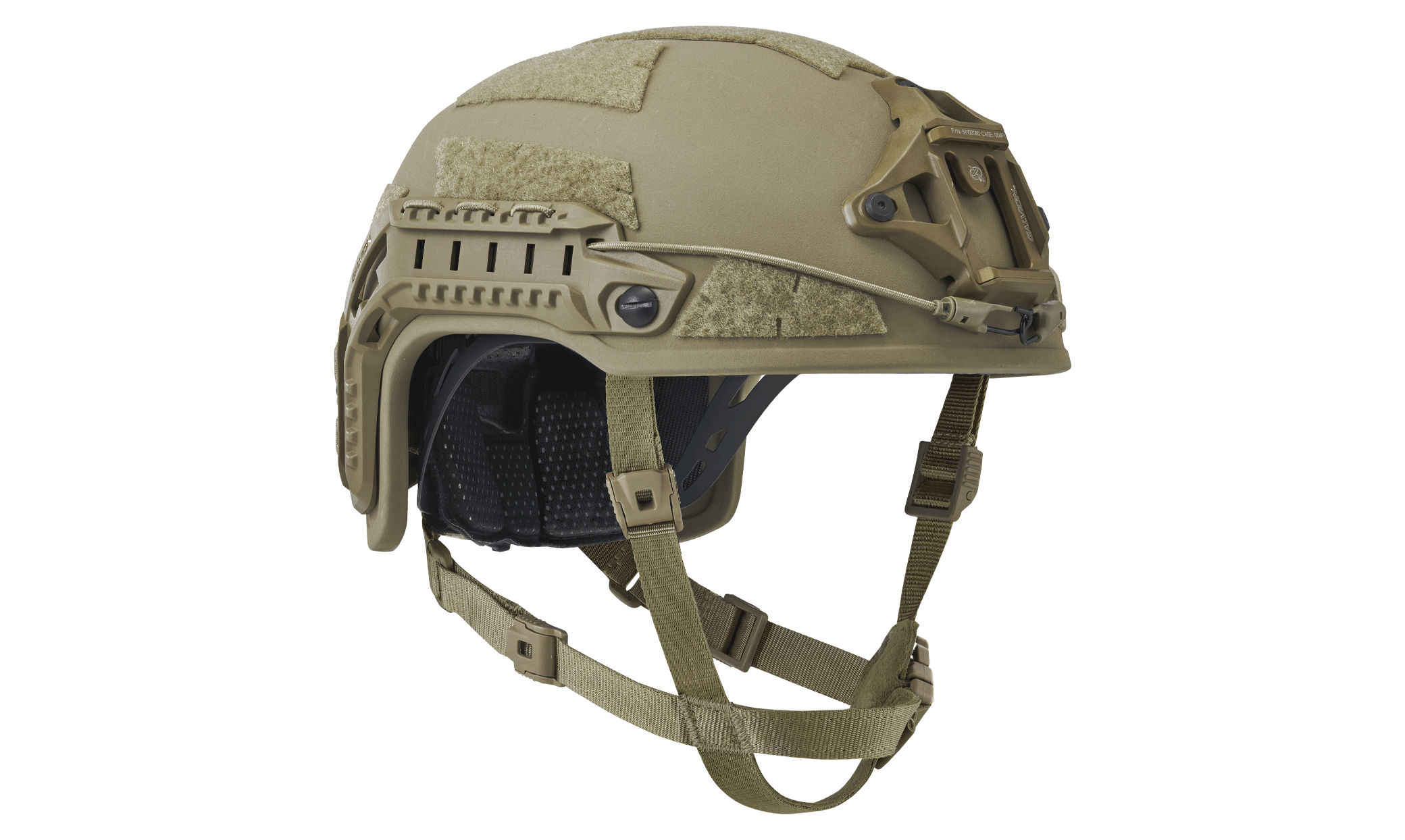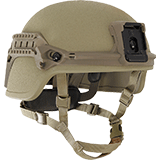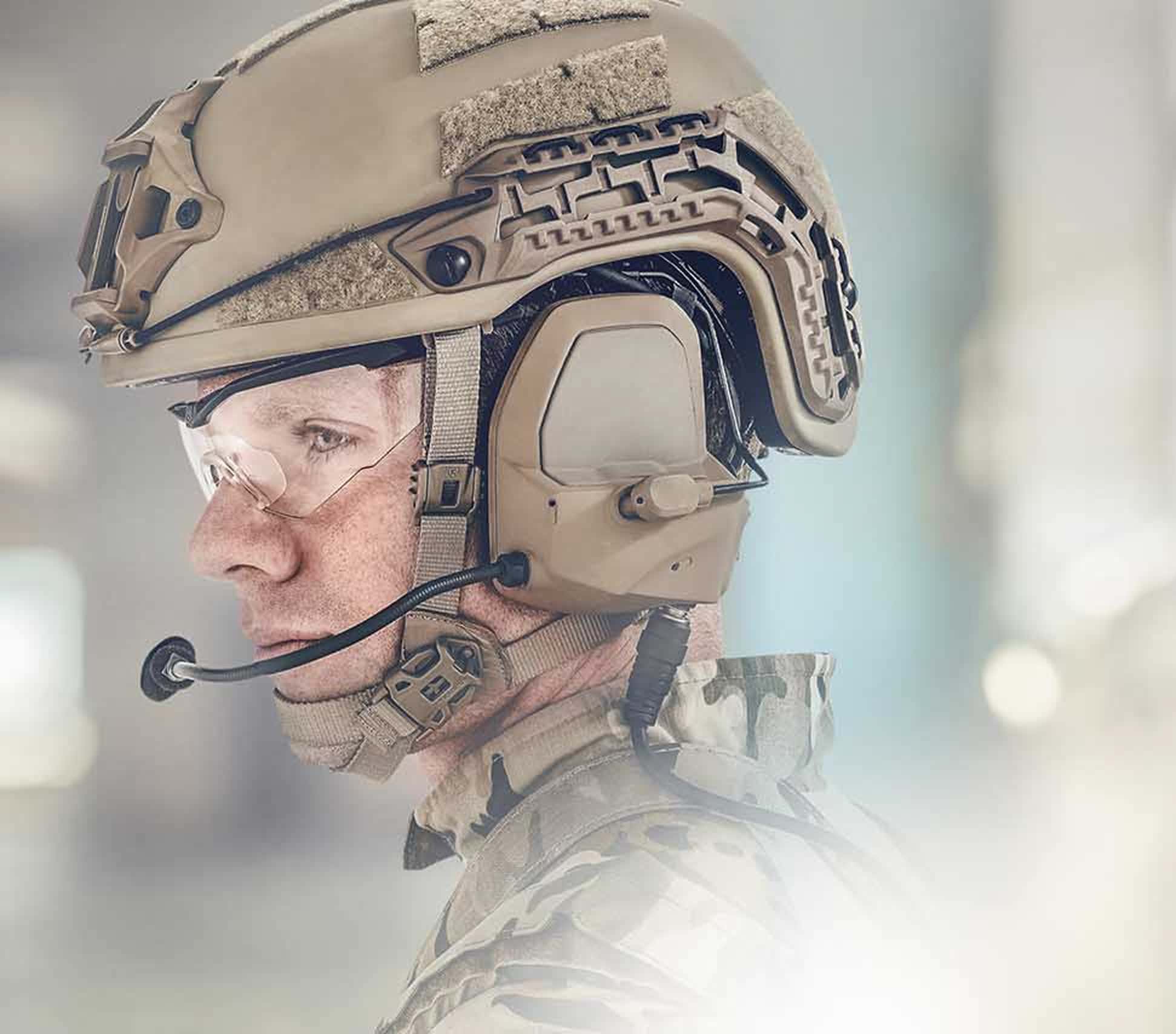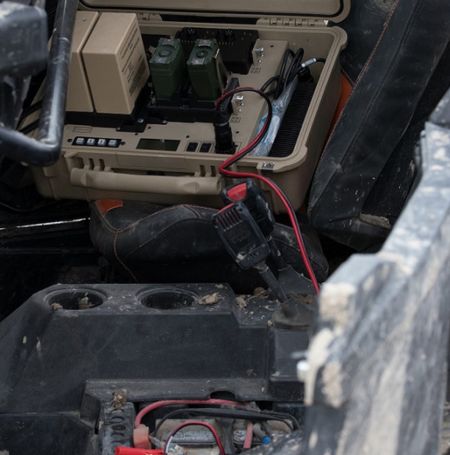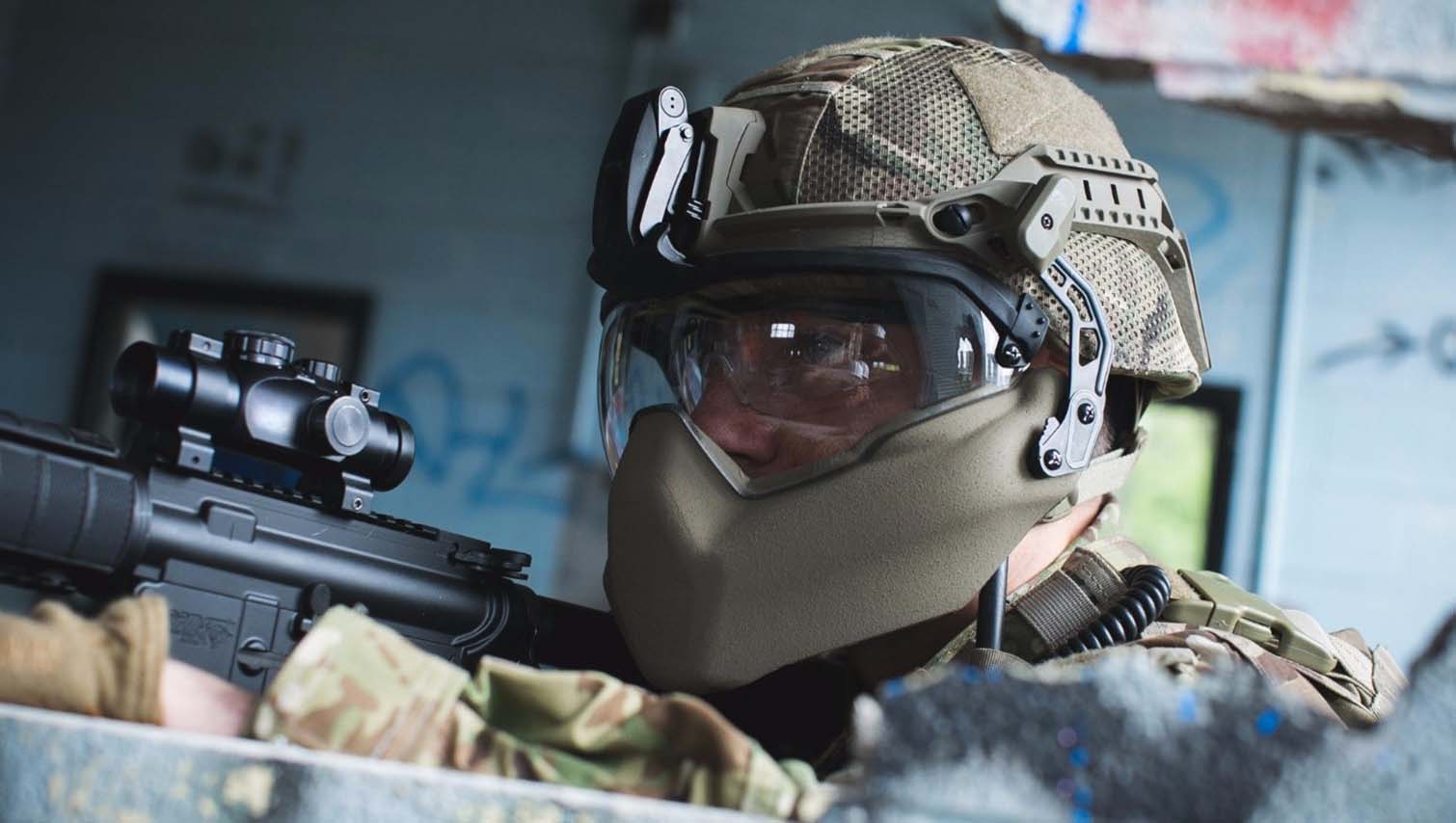THE SOLUTION
A 2010 study conducted at MIT (in collaboration with the Defense and Veterans Brain Injury Center at Walter Reed Army Medical Center) and published in Proceedings of the National Academy of Sciences, provides evidence for a promising step forward for head injury prevention: According to study lead, MIT Associate Professor Paul Radovitzky, adding a face shield to current in-service helmets could mitigate hard and soft tissue maxillofacial wounds, and could “significantly reduce” the incidence of traumatic brain injury.[v] This conclusion was drawn from sophisticated finite element analysis (FEA) modeling that revealed that “the face is the main pathway through which blast waves are transmitted to the brain.”[vi] Therefore, this replicated research study provides evidence that face shields, such as visors and mandible guards (which impede “direct transmission of blast waves to the face,” as shown in an antecedent study conducted at the Walter Reed Army Institute of Research[vii]) could help reduce the incidence of TBI due to explosions because this physical barrier.
Galvion has taken the lead in making the findings of this study reality for troops in the field, designing, developing, and manufacturing a variety of integrated head protection systems that address the demands of the modern battlefield and incorporate cutting-edge research on injury prevention. In particular, Galvion’s Batlskin® technology, and various suites of integrated Batlskin components, bring advanced modular head protection to international and domestic forces in the continuing effort to enhance soldier and tactical survivability.
 THE BATLSKIN HEAD PROTECTION SYSTEM
THE BATLSKIN HEAD PROTECTION SYSTEM
The Batlskin Head Protection System is the first fully integrated and fully modular solution of its kind. Batlskin technology is incorporated in Galvion’s Batlskin Caiman™, Batlskin Viper® and Batlskin Cobra® helmets, combining groundbreaking technology with new materials and innovative processes to deliver lightweight ballistic helmet shells, shock-absorbing liners and retention systems, front mounts, mandible guards, and protective visors. All these components are perfected individually and integrate seamlessly, resulting in head protection systems that provide unmatched blunt force, blast, and ballistic protection and enhanced operational performance through weight reduction and quick, intuitive, tooless configuration.
BATLSKIN HEAD PROTECTION SYSTEM COMPONENT OVERVIEW
Batlskin Lightweight Helmets (Viper ACH-shaped helmets and Cobra dome-shaped helmets) represent the cutting-edge in shell technology. Built from advanced, hybridized materials—cut, bonded, and pressed using innovative machinery and manufacturing processes—Batlskin shells achieve significant weight reduction—a minimum of 15% lighter than current aramid shells, for long-wear comfort and agility—and superior ballistic performance compared to standard aramid helmets. Batlskin helmets are engineered to have rigid construction to better withstand blunt force, blast, and ballistic threats.
The Batlskin Modular Suspension & Retention System is designed to optimize stability and comfort, both essential for fast-moving operations. The system features an impact liner, made of low-profile, sweat-wicking material; an adjustable crown net that suspends the helmet shell on the wearer’s head, providing a free flow of air for extra cooling; and a dial-fit band with comfort pads, adding another layer of comfort and adjustability, allowing users to tighten or loosen the fit around the circumference of the head using a dial ratchet mechanism located at the back of the system.
 The Batlskin Front Mount is a lightweight and highly durable base that allows for rapid device or equipment attachment. In particular, the Batlskin Visor is attached using the Front Mount, allowing this protective shield to integrate seamlessly with the head system and seal against the mandible, as well as to pivot in multiple set positions. Ingeniously, the Front Mount also doubles as a stable and secure universal NVG mount, as well as a platform for other similar surveillance devices, to enhance operational efficiency.
The Batlskin Front Mount is a lightweight and highly durable base that allows for rapid device or equipment attachment. In particular, the Batlskin Visor is attached using the Front Mount, allowing this protective shield to integrate seamlessly with the head system and seal against the mandible, as well as to pivot in multiple set positions. Ingeniously, the Front Mount also doubles as a stable and secure universal NVG mount, as well as a platform for other similar surveillance devices, to enhance operational efficiency.
The Batlskin Mandible Guard provides lightweight blunt force, blast and ballistic protection for the lower jaw. Its durable, low-profile design is engineered for rapid attachment and removal on-the-fly. The Mandible Guard integrates seamlessly with all Batlskin modular components, and is adjustable for crew served weapon sighting. Mandibles provide adaptable protection in different threat scenarios.
The Batlskin Visor provides blunt force, blast, and fragmentation protection for the eyes and face. Injection-molded, and featuring flawless optics, Batlskin Visors maximize the field-of-view for superior situational awareness and can be adjusted to multiple positions—locked, vented, and up. Designed for quick, one-handed donning and doffing, the Visor frame, seal, and arm ensure secure attachment to the helmet during blast overpressure stresses. And finally, treated with multiple innovative coatings, making these visors highly resistant to fogging, scratches, and chemicals.
Interlocking Rails fit flush to the curvature on either side of the helmet and connect to the Front Mount. The side rails act as a base for quick and easy attachment of devices such as cameras, lights, and other headborne accessories. Alternatively, Standalone Long Rails can be used with alternative NVG and stabilization.
[i] Petersen, K., Hale, R. G., Hayes, D. K., Blice, J. P. (2008). Prevention and management of combat-related infections of the maxillofacial, head and neck region: a review. The Journal of Trauma, (64)3, S265-76.
[ii] Hoge, C. W., McGurk, D., Thomas, J. L., Cox, A. L., Engel, C. C., Castro, C. A. (2008). Mild Traumatic Brain Injury in U.S. Soldiers Returning from Iraq. The New England Journal of Medicine, (358) 5, 453-63.
[iii] DoD Worldwide Numbers for Traumatic Brain Injury ‘00-‘15 (2016). Defense and Veterans Brain Injury Center. Retrieved from http://dvbic.dcoe.mil/dod-worldwide-numbers-tbi
[iv] Kristine Yaffe, MD, et al. Traumatic Brain Injury and Risk of Dementia in Older Veterans. (Funder: U.S. Department of Defense). Retrieved from http://www.alz.org/aaic/monday_1230amCT_news_release_brain_injury.asp
[v] Hirsch, J. (2010, November 22). MIT study: Adding face shields to helmets could help avoid blast-induced brain injuries. MIT Media Relations. Retrieved from http://web.mit.edu/press/2010/brain-injuries-1123.html
[vi] Hirsch, J. (2010, November 22). MIT study: Adding face shields to helmets could help avoid blast-induced brain injuries. MIT Media Relations. Retrieved from http://web.mit.edu/press/2010/brain-injuries-1123.html
[vii] Hoge, C. W., McGurk, D., Thomas, J. L., Cox, A. L., Engel, C. C., Castro, C. A. (2008). Mild Traumatic Brain Injury in U.S. Soldiers Returning from Iraq. The New England Journal of Medicine, (358) 5, 453-63.
-and-the-caiman-sar-(search-and-rescue)2.0.jpg)


 THE BATLSKIN HEAD PROTECTION SYSTEM
THE BATLSKIN HEAD PROTECTION SYSTEM The Batlskin Front Mount is a lightweight and highly durable base that allows for rapid device or equipment attachment. In particular, the Batlskin Visor is attached using the Front Mount, allowing this protective shield to integrate seamlessly with the head system and seal against the mandible, as well as to pivot in multiple set positions. Ingeniously, the Front Mount also doubles as a stable and secure universal NVG mount, as well as a platform for other similar surveillance devices, to enhance operational efficiency.
The Batlskin Front Mount is a lightweight and highly durable base that allows for rapid device or equipment attachment. In particular, the Batlskin Visor is attached using the Front Mount, allowing this protective shield to integrate seamlessly with the head system and seal against the mandible, as well as to pivot in multiple set positions. Ingeniously, the Front Mount also doubles as a stable and secure universal NVG mount, as well as a platform for other similar surveillance devices, to enhance operational efficiency.